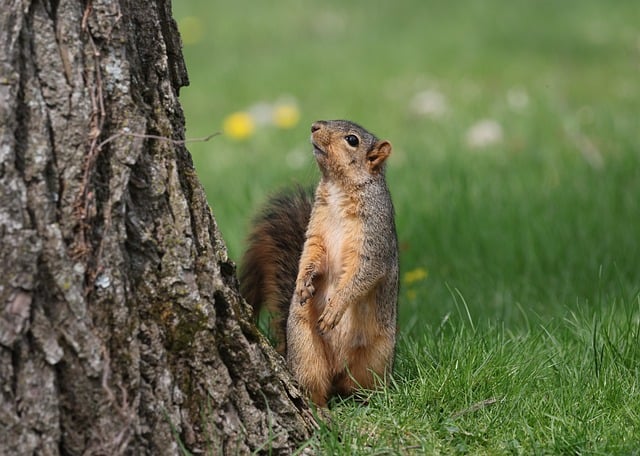Incorporating permaculture principles into your backyard design creates a harmonious, sustainable space using eco-friendly practices like water harvesting, composting, and native plant species. By focusing on biodiversity and resource efficiency, you minimize maintenance, attract wildlife, and reduce your environmental footprint, transforming your yard into an edible oasis that benefits both your home and the planet.
Transform your backyard into a thriving oasis with permaculture-inspired designs. This approach encourages ecological balance, self-sufficiency, and beauty, making your outdoor space both functional and harmonious. In this guide, we explore fundamental permaculture principles tailored for backyards, highlighting key elements of sustainable design, the integration of edible gardens and food production, and creative landscaping techniques that blend aesthetics with practicality. Discover how to create a vibrant, resilient, and sustainable backyard sanctuary.
Understanding Permaculture Principles for Backyard Spaces
Incorporating permaculture into your backyard design is a powerful way to create a harmonious and sustainable oasis. Permaculture principles emphasize ecological balance, resource efficiency, and working with nature rather than against it. For a sustainable backyard, understanding these fundamentals is key. By mimicking natural ecosystems, you can cultivate a diverse range of plants, integrate beneficial insects, and encourage wildlife habitat—all while minimizing maintenance.
Focus on efficient water usage, composting to reduce waste, and selecting native plant species adapted to your climate. These practices not only promote environmental health but also create an aesthetically pleasing space that requires less artificial intervention. Embracing permaculture design allows you to transform your backyard into a vibrant, resilient ecosystem that contributes positively to both your home and the surrounding environment.
Key Elements of a Sustainable Backyard Design
In crafting a sustainable backyard, several key elements come into play, creating an eco-friendly oasis in your own home. One of the fundamental aspects is integrating permaculture principles, which focus on mimicking natural ecosystems. This involves designing with biodiversity in mind—introducing a range of plants, trees, and shrubs that support local wildlife, reduce pests naturally, and create a balanced ecosystem. For instance, including native plant species not only attracts beneficial insects but also promotes soil health and water retention.
Another crucial element is the efficient use of resources. Sustainable backyard design encourages responsible water management through strategies like rainwater harvesting and drip irrigation systems. Additionally, incorporating compost piles or vermicompost bins allows for the recycling of organic waste, reducing landfill contributions. Solar power and energy-efficient lighting are also valuable assets, ensuring a greener footprint while illuminating your outdoor space.
Incorporating Edible Gardens and Food Production
Inspiring your sustainable backyard transformation with edible gardens and food production is an excellent way to connect with nature while contributing to a healthier environment. Permaculture design principles encourage diversifying plant species, creating intercropping opportunities, and implementing companion planting techniques. This approach not only enhances biodiversity but also maximizes space efficiency in your backyard haven.
By integrating fruits, vegetables, herbs, and even nuts into your landscape, you can enjoy fresh produce while reducing your carbon footprint. Edible gardens promote sustainable food production, minimizing the need for store-bought goods. Moreover, these dynamic systems provide a continuous supply of nutrients and support local ecosystems by attracting beneficial insects and wildlife.
Creative Landscaping Techniques for Aesthetic Functionality
Inspiring your backyard transformation with permaculture principles, creative landscaping isn’t just about aesthetics—it’s a powerful tool for enhancing functionality in sustainable backyard designs. Embrace natural patterns and diverse elements to create harmonious spaces that support local ecosystems and meet your needs. For instance, consider layered landscapes incorporating raised beds, vertical gardens, and multi-layered planting schemes to maximize space while encouraging biodiversity.
Integrate functional features like composting areas, water harvesting systems, and native plant gardens to reduce maintenance, conserve resources, and attract beneficial insects and wildlife. These techniques not only enhance the beauty of your outdoor sanctuary but also contribute to a more sustainable and resilient living environment, ensuring your backyard becomes a vibrant ecosystem that flourishes with creativity and care.
Permaculture offers a transformative approach to backyard design, promoting harmonious coexistence with nature. By integrating sustainable practices and thoughtful planning, homeowners can create vibrant, edible oases that contribute to both environmental health and aesthetic appeal. Embracing key principles from permaculture, including diverse plant life, water management, and closed-loop systems, ensures a resilient and beautiful sustainable backyard that provides for both the resident and the planet.
